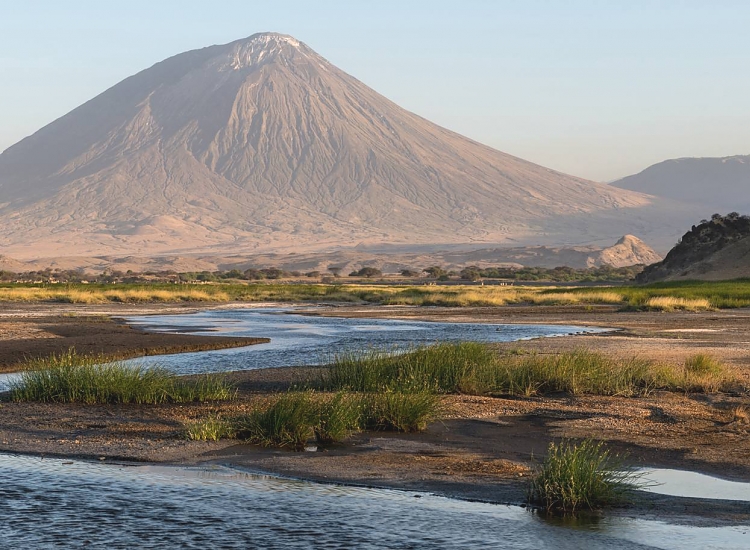Mount Ol'doinyo Lengai

Mount Ol'doinyo Lengai
Overview
Mount Ol'Doinyo Lengai, known as the "Mountain of God" in the Maasai language, is an active stratovolcano located in northern Tanzania. Standing at 2,962 meters (9,718 feet), it is part of the East African Rift Valley and is the only known volcano in the world to erupt carbonatite lava, which is unusually cool and fluid. The mountain is considered sacred by the Maasai people and offers challenging climbs for adventurous hikers. Its unique landscape, with stunning views of the Great Rift Valley, Lake Natron, and nearby volcanic formations, makes Ol'Doinyo Lengai a must-visit for those seeking an off-the-beaten-path experience in Tanzania.
Wildlife
While Mount Ol'Doinyo Lengai itself does not host a wide variety of wildlife, the surrounding regions, including the plains of the Great Rift Valley, are home to an array of animals. Wildlife enthusiasts can spot giraffes, zebras, wildebeest, and gazelles roaming the open savannah. Predators such as lions and hyenas also inhabit the area. The nearby Lake Natron, located at the base of the volcano, is a key breeding ground for East Africa’s lesser flamingos, providing a stunning spectacle of pink flocks against the lake's stark, mineral-rich surface.
Birds
Mount Ol'Doinyo Lengai and its surroundings are a birdwatcher’s paradise. The nearby Lake Natron is famous for hosting thousands of lesser flamingos, which come to breed in the alkaline waters. In addition to flamingos, the region is home to a variety of bird species, including African fish eagles, ostriches, white-headed buffalo weavers, and yellow-collared lovebirds. The diverse habitats, from volcanic slopes to alkaline lakes, make the area ideal for spotting a range of unique and colorful birds.
Best Time To Visit
The best time to visit Mount Ol'Doinyo Lengai is during the dry season, from June to October, when the weather is cooler and the trails are less slippery. These months offer clearer skies, making for excellent visibility during the challenging climb. The rainy season, from March to May and in November, can make the steep paths more difficult due to mud and loose rocks. However, the wet season is a great time to witness Lake Natron’s abundant birdlife, as flamingos flock to the area to breed.
Weather & Climate
Mount Ol'Doinyo Lengai experiences a semi-arid climate, with hot days and cooler nights due to its elevation. Daytime temperatures range from 20°C to 30°C (68°F to 86°F), while nighttime temperatures can drop significantly, especially at higher altitudes. The dry season, from June to October, provides the best conditions for hiking, while the rainy season brings occasional heavy showers, which can make the climb more challenging. Hikers should prepare for sudden weather changes and cool temperatures at the summit.
Getting There
Mount Ol'Doinyo Lengai is accessible via road from Arusha, which is about 230 kilometers (143 miles) away—a journey of around 6 to 7 hours. The drive passes through stunning landscapes, including the Great Rift Valley and Maasai villages. Visitors often combine the trek with a visit to nearby attractions like Lake Natron or Serengeti National Park. The climb is best attempted with a local guide, as the paths are steep, challenging, and not well-marked. Most climbs begin at night to reach the summit by sunrise, allowing for breathtaking views over the Rift Valley.
